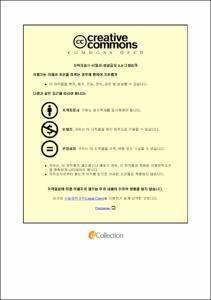폐기물 배출해역의 환경성 평가에 의한 준설토 피복효과에 관한 연구
- Abstract
- In this study, the capping effects of the dredged materials applied for remediation and restoration of heavily contaminated areas in the West Sea-Byeong ocean dumping site were evaluated through analyses of sediment physicochemical properties, the assemblages and health of benthic fauna, and sediment ecotoxicity. Management plans for future development were sought to improve the capping effect.
First, results of the analysis of sediment physicochemical properties showed significant differences in particle size between areas due to the capping effect of dredged materials. In the capping area, the content of organic matter (COD; about 48%) and heavy metals (about 50%) was lower than such content in the no capping area due to blockage of the contaminated sediment layer, demonstrating the capping effect of dredged materials.
In the case of benthic assemblages, differences in particle size, COD, and the number of sensitive species were observed in the capping area. Regarding the evaluation of the health of benthic fauna for each research area, while the score on AZTI’s Marine Biotic Index (AMBI) was 3.2 (good) or less in all areas, the Benthic Pollution Index (BPI) value of 1 has been maintained in the capping area since 2017, indicating better benthic health than in the no capping area (BPI 1–2) and suggesting that the recovery of the benthic ecosystem is underway.
As a result of the ecotoxicological test using luminescent bacteria (Vibrio fischeri) and benthic amphipods (Monocorophium acherusicum), in all areas, the relative luminescence inhibition rate and the relative average survival rate were each less than 30%, indicating “no toxicity” according to the criteria presented in the Korean Standard Method of Examination for Marine Environment.
The integrated evaluation of the capping effects of dredged materials was determined from scores for the COD, heavy metal concentration index (Geoaccumulation Index: Igeo), BPI, and results of the ecotoxicological test. As a result, the no capping area scored 4–5 (very poor), whereas the reference area was evaluated with a score of 3 (normal). Meanwhile, the score for the capping area was 2 (good) to 3 (normal), indicating that dredged materials were effective in remediating and restoring contaminated sediment.
Therefore, it is desirable to apply the capping method in order to establish a physical barrier with dredged materials as a method for remediation and restoration of heavily contaminated sediment in ocean dumping site.
By applying such capping materials as zeolite and oyster shells, in addition to dredged materials, a chemical remediation effect can be expected through adsorption and decomposition of highly concentrated heavy metals and organic substances isolated under the capped layer.
In addition, when expanding the project to remediate and restore at the ocean dumping site in the future, it will be necessary to establish and operate an integrated ocean dumping site management system by adopting the concept of adaptive management including the steps of assessing problems, establishing and designing the management plan, implementing the plan, monitoring, conducting evaluations, and adjustments.
- Issued Date
- 2022
- Awarded Date
- 2022. 8
- Type
- Dissertation
- Publisher
- 부경대학교
- Affiliation
- 부경대학교 대학원
- Department
- 대학원 해양산업공학협동과정
- Advisor
- 이석모
- Table Of Contents
- Ⅰ. 서론 1
1. 연구 배경 1
2. 연구 목적 4
Ⅱ. 폐기물 해양배출 및 오염퇴적물 정화·복원 방법 5
1. 폐기물 해양배출 일반현황 5
가. 폐기물 해양배출제도의 국내·외 동향 5
나. 폐기물 해양배출 방법 9
다. 폐기물 배출해역 현황 10
2. 폐기물 배출해역 퇴적물 오염 정도 평가 14
가. 오염퇴적물 평가의 필요성 14
나. 퇴적물 오염도 평가 방법 15
3. 오염퇴적물 정화·복원 방법 17
가. 자연정화 17
나. 준설 19
다. 피복 20
라. 국내·외 적용 사례 21
Ⅲ. 폐기물 배출해역의 퇴적물 오염도 평가 24
1. 연구 대상 해역 24
가. 서해의 퇴적환경 특성 24
나. 서해병 폐기물 배출해역 25
2. 퇴적물 오염도 평가 방법 28
가. 퇴적물 화학 환경 28
나. 저서생물 군집구조 39
다. 생태독성시험 43
3. 퇴적물 오염도 평가 결과 및 고찰 47
가. 퇴적물 화학 환경 47
나. 저서생물 군집구조 89
다. 생태독성시험 110
Ⅳ. 폐기물 배출해역의 준설토 피복효과 평가 115
1. 준설토 피복효과 평가 방법 115
가. 퇴적물 중금속 함량 분석 115
나. 저서생물 다양도 115
다. 저서건강도 평가 116
라. 생태독성시험 116
2. 준설토 피복효과 평가 결과 및 고찰 117
가. 준설토 피복 두께 효과 117
나. 퇴적물 중금속 오염도 저감 효과 120
다. 저서생물 다양성 회복 효과 120
라. 저서동물 건강성 회복 효과 121
마. 퇴적물 생태독성 122
3. 준설토 피복효과 종합 결과 123
Ⅴ. 폐기물 배출해역 오염퇴적물 정화·복원 기술 제안 129
1. 준설토를 활용한 오염퇴적물 피복 방법 129
2. 굴 패각을 활용한 오염퇴적물 피복 방법 130
3. 적응관리 개념을 도입한 폐기물 배출해역 관리 135
가. 적응관리 개념과 절차 135
나. 폐기물 배출해역의 적응관리 적용 방안 138
Ⅵ. 요약 및 결론 143
참고문헌 147
- Degree
- Doctor
- Appears in Collections:
- 대학원 > 해양산업공학협동과정
- Files in This Item:
-
-
Download
 폐기물 배출해역의 환경성 평가에 의한 준설토 피복효과에 관한 연구.pdf
기타 데이터 / 2.5 MB / Adobe PDF
폐기물 배출해역의 환경성 평가에 의한 준설토 피복효과에 관한 연구.pdf
기타 데이터 / 2.5 MB / Adobe PDF
-
Items in Repository are protected by copyright, with all rights reserved, unless otherwise indicated.